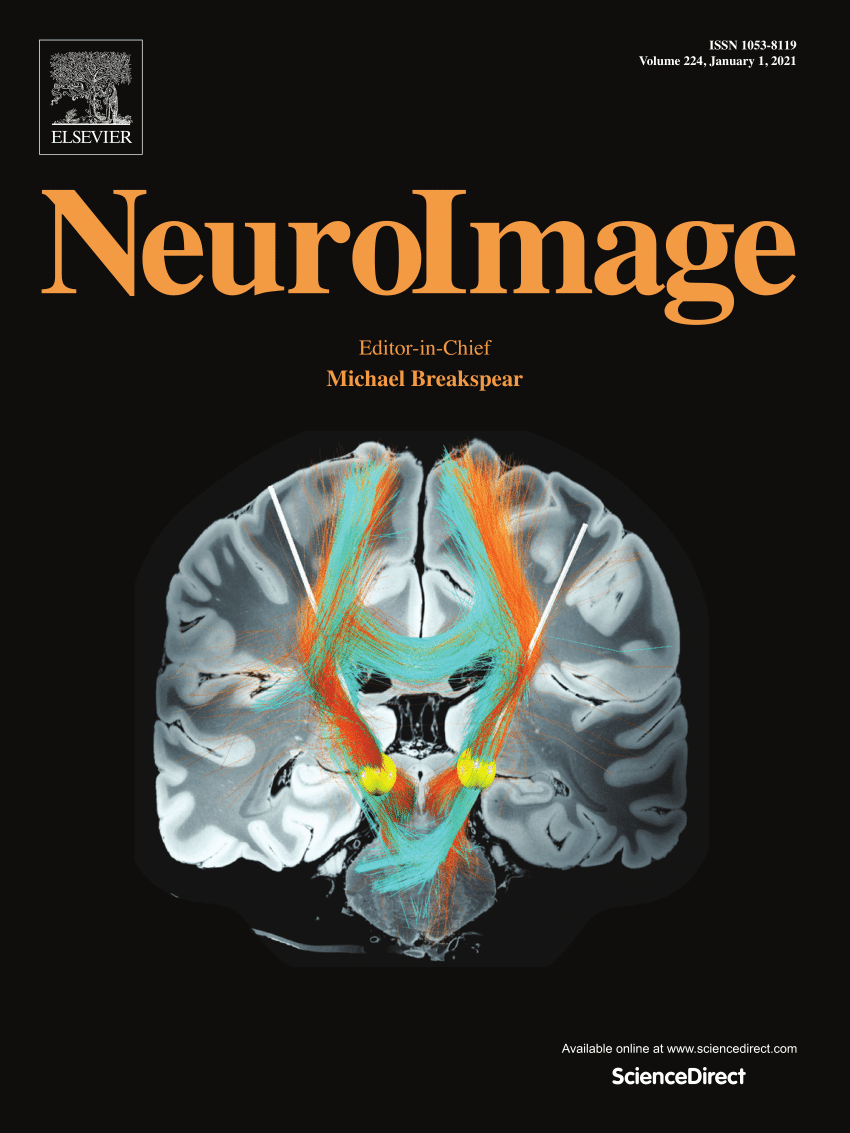面部表情有选择性地调节P300体感诱发电位,但情绪场景没有:感觉运动模拟的电生理证据。
IF 4.7
2区 医学
Q1 NEUROIMAGING
引用次数: 0
摘要
感觉运动皮层在处理面部表情中的作用仍然是一个有争议的话题。虽然有大量证据支持它们通过模拟和镜像机制参与其中,但另一种观点认为,感觉运动激活反映了对情感内容的一般情绪调整。为了澄清这些相互矛盾的假设,我们检查了感觉运动对情绪(恶心)场景的反应——不需要模拟就能唤起情感——和厌恶的面部表情。在三分之一的试验中,在两个时间点对左提上唇肌施加温和的触觉刺激以引发体感诱发电位(sep)。采用减法方法,通过从视觉-触觉联合反应(SEP+VEP)中去除视觉反应(VEP)来分离纯粹的体感活动,并将空白屏幕条件作为附加基线。我们观察到,与恶心的场景相比,当触觉刺激后出现恶心的面部表情时,右侧中央、中央额叶和中央顶叶电极的P300 SEP振幅虽小但显著降低。这种效应独立于对唤醒和效价的主观评价。重要的是,只有面部表情后的sep与单独触觉刺激后的sep有显著差异,这表明面部表情处理对sep有特定的调节作用。尽管观察到的影响幅度相对较小,结果也有些初步,但这些发现提供了新的证据,表明面部表情以一种特殊的、特权的方式参与感觉运动系统,与模拟假设一致。本文章由计算机程序翻译,如有差异,请以英文原文为准。
Facial expressions selectively modulate P300 somatosensory evoked-potential, but emotional scenes do not: Electrophysiological evidence for sensorimotor simulation
The role of the sensorimotor cortices in processing facial expressions remains a topic of debate. While substantial evidence supports their involvement via simulation and mirroring mechanisms, an alternative view argues that sensorimotor activation reflects a general emotional tuning to affective content. To clarify these competing hypotheses, we examined sensorimotor responses to emotional (disgusting) scenes—which evoke affect without requiring simulation—and emotional (disgusted) facial expressions. In one-third of trials, gentle tactile stimulation was applied to the left levator labii superioris muscle at two time points to elicit somatosensory evoked potentials (SEPs). A subtraction approach was used to isolate pure somatosensory activity by removing visual-only responses (VEP) from combined visual-tactile responses (SEP+VEP), with a blank-screen condition as an additional baseline.
We observed a small but significant reduction in P300 SEP amplitude at right central, centro-frontal, and centro-parietal electrodes when tactile stimulation followed disgusted facial expressions compared to disgusting scenes. This effect was independent of subjective ratings of arousal and valence. Importantly, only SEPs following facial expressions differed significantly from those following tactile stimulation alone, suggesting a specific modulation by facial expression processing. Despite the relatively small amplitude of the observed effects, and the somewhat preliminary nature of the results, these findings provide novel evidence that facial expressions engage the sensorimotor system in a specific and privileged manner, consistent with the simulation hypothesis.
求助全文
通过发布文献求助,成功后即可免费获取论文全文。
去求助
来源期刊

NeuroImage
医学-核医学
CiteScore
11.30
自引率
10.50%
发文量
809
审稿时长
63 days
期刊介绍:
NeuroImage, a Journal of Brain Function provides a vehicle for communicating important advances in acquiring, analyzing, and modelling neuroimaging data and in applying these techniques to the study of structure-function and brain-behavior relationships. Though the emphasis is on the macroscopic level of human brain organization, meso-and microscopic neuroimaging across all species will be considered if informative for understanding the aforementioned relationships.
 求助内容:
求助内容: 应助结果提醒方式:
应助结果提醒方式:


